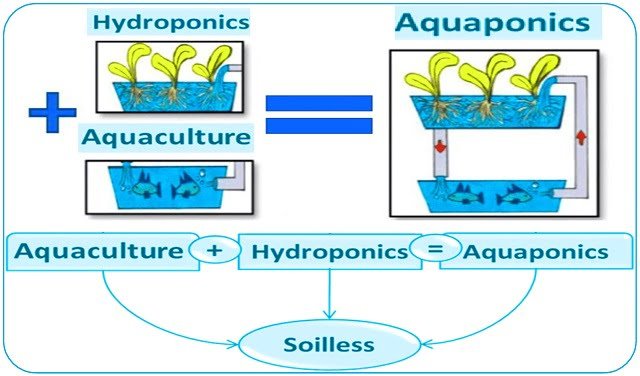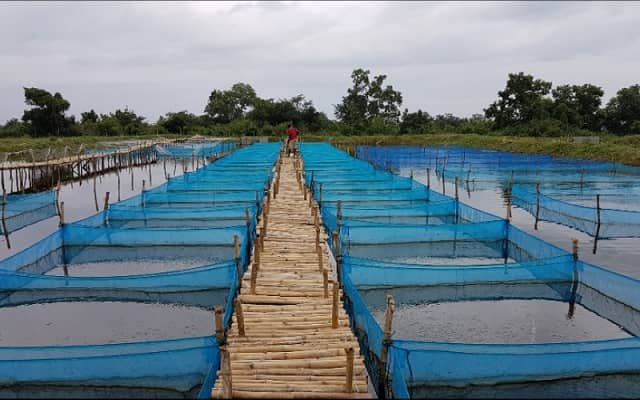Piraeus, Greece.- The Hellenic Statistical Authority (ELSTAT) announces the results of the Survey on Aquaculture for the reference year 2016.
The main purpose of the Survey on Aquaculture is to compile data on the cultivation methods, production and value of the cultivated species by cultivation method, production of fish larva in hatcheries/nurseries and on the number of employees.
A. QUANTITY AND VALUE OF REARED OR CULTIVATED SPECIES
The changes in the quantity and value of the reared or cultivated species, by main group, in Greece total, are as follows:
– Fish: in 2016 compared with 2015, an increase of 11.9% was recorded in the quantity of fish and an increase of 9.9% in the corresponding value, while in 2015 compared with 2014, there was an increase of 1.8%* and 7.8%* in the quantity of fish and the corresponding value, respectively. More specifically, 99,997.8 tonnes of fish with a total value of 516,660.8 thousand euro were farmed in 2016, 89,334.9* tonnes of fish with a total value of 469,968.0*thousand euro in 2015 and 87,761.0 tonnes of fish with a total value of 436,072.3 thousand euro in 2014,
– Molluscs and Crustaceans: in 2016 compared with 2015, the quantity of molluscs / crustaceans recorded an increase of 24.8% and the corresponding value increased by 23.1%, while in 2015 compared with 2014, there was an increase of 11.8% and 8.0% in the quantity and value, respectively. More specifically, 23,321.0 tonnes of molluscs / crustaceans with a total value of 8,480.4 thousand euro were farmed in 2016, 18,680.2 tonnes with a total value of 6,889.1 thousand euro in 2015 and 16,701.2 tonnes of molluscs / crustaceans with a total value of 6,378.0 thousand euro in 2014.
The changes in the quantity and value of the farmed or cultivated fish species, by type of water, are as follows:
Stay Always Informed
Join our communities to instantly receive the most important news, reports, and analysis from the aquaculture industry.
– Fresh water: in2016 compared with 2015, there was a decrease of 1.5% in fish quantity and an increase of 9.6% in the corresponding value, while in2015 compared with 2014, there was an increase of 7.3% and 4.5%* in fish quantity and value, respectively. More specifically, 2,071.0 tonnes of fish with a total value of 9,853.3 thousand euro were farmed in 2016 2,101.6 tonnes of fish with a total value of 8,986.9* thousand euro in 2015 and 1,959.2 tonnes with a total value of 8,603.3 thousand euro in 2014,
– Brackish water: in 2016 compared with 2015, there was an increase of 25.6% in fish quantity and an increase of 20.2% in the corresponding value, while in 2015 compared to 2014, there was a decrease of 1.6%* and 18.1%* in fish quantity and value, respectively. More specifically, 970.5 tonnes of fish with a total value of 3,347.5 thousand euro were farmed in 2016, 772.6* tonnes of fish with a total value of 2,783.9* thousand euro in 2015 and 784.9 tonnes of fish with a total value of 3,399.3 thousand euro in 2014,
– Sea water: in 2016 compared with 2015, there was an increase of 14.4% in fish quantity and a 10.0% increase in the corresponding value, while in 2015 compared to 2014, there was an increase of 3.4%* and 8.0% in fish quantity and value, respectively. More specifically, 120,290.7 tonnes of fish with a total value of 512,466.3 thousand euro were farmed in 2016, 105,157.9* tonnes of fish with a total value of 465,733.1* thousand euro in 2015 and 101,737.3 tonnes of fish with a total value of 431,339.7 thousand euro in 2014.
B. PRODUCTION OF FISH LARVA IN HATCHERIES AND NURSERIES
The changes in the produced quantity of fish larva, by species in Greece (total), are as follows:
– Overall production of fish larva: the quantity of fish larva in 2016 increased by 8.5% compared with to 2015, in relation to an increase of 0.4%* recorded in 2014/2013. More specifically, fish larva amounted to 435,224 thousand juveniles in 2016, 401,253* thousand juveniles in 2015 and 399,574 thousand juveniles in 2014.
More specifically, as regards the main species:
– European seabass: the quantity of larva in 2016 recorded an increase of 5.4% compared with 2015, in relation to a decrease of 10.6%* recorded for 2015/2014. More specifically, european seabass larva amounted to 163,316 thousand juveniles in 2016, 154,915* thousand juveniles in 2015 and 173,346 thousand juveniles in 2014,
– Gilthead seabream: the quantity of larva in 2016 recorded an increase of 11.2% compared with 2015, in relation to an increase of 9.5%* recorded for 2015/2014. More specifically, gilthead sea bream larva amounted to 258,137 thousand juveniles in 2016, 232,221* thousand juveniles in 2015 and 212,046 thousand juveniles in 2014,
– Trout: the quantity of larva in 2016 recorded a decrease of 7.6% compared with 2015, in relation to a decrease of 1.8% recorded for 2015/2014. More specifically, trout larva amounted to 6,947 thousand juveniles in 2016, 7,518 thousand juveniles in 2015 and 7,655 thousand juveniles in 2014,
– Other fish: the quantity of larva for 2016 recorded an increase of 3.4% compared with 2015, in relation to an increase of 1.1% recorded for 2015/2014. More specifically, other fish larva amounted to 6,824 thousand juveniles in 2016, 6,599 thousand juveniles in 2015 and 6,527 thousand juveniles in 2014.
C. EMPLOYED PERSONS BY TYPE OF EMPLOYMENT RELATIONSHIP
The changes in the total annual employment are as follows:
– The total number of employed persons recorded an increase of 5.3% in 2016 compared with 2015, in relation to an increase of 0.1%* recorded for 2015/2014. More specifically, the total number of employees amounted to 4,287 in 2016, 4,073* in 2015 and 4,069 in 2014.
More specifically, the changes in employment, by type of employment relationship, are as follows:
– Permanent staff recorded an increase of 1.8% in 2016 compared with 2015, in relation to an increase of 0.3%* recorded for 2015/2014. More specifically, permanent employees amounted to 3,574 in 2016, 3,510* in 2015 and 3,500 in 2014.
– Temporary staff recorded an increase of 26.6% in 2016 compared with 2015, in relation to a decrease of 1.1%* recorded for 2015/2014. More specifically, temporary employees amounted to 713 in 2016, 563* in 2015 and 569 in 2014.
More information at: http://www.statistics.gr/en/statistics/-/publication/SPA06/2016
Editor at the digital magazine AquaHoy. He holds a degree in Aquaculture Biology from the National University of Santa (UNS) and a Master’s degree in Science and Innovation Management from the Polytechnic University of Valencia, with postgraduate diplomas in Business Innovation and Innovation Management. He possesses extensive experience in the aquaculture and fisheries sector, having led the Fisheries Innovation Unit of the National Program for Innovation in Fisheries and Aquaculture (PNIPA). He has served as a senior consultant in technology watch, an innovation project formulator and advisor, and a lecturer at UNS. He is a member of the Peruvian College of Biologists and was recognized by the World Aquaculture Society (WAS) in 2016 for his contribution to aquaculture.




